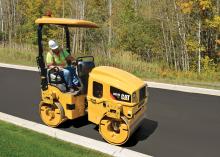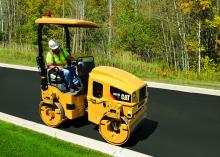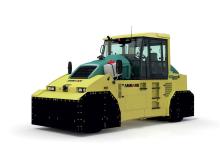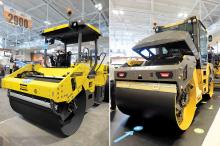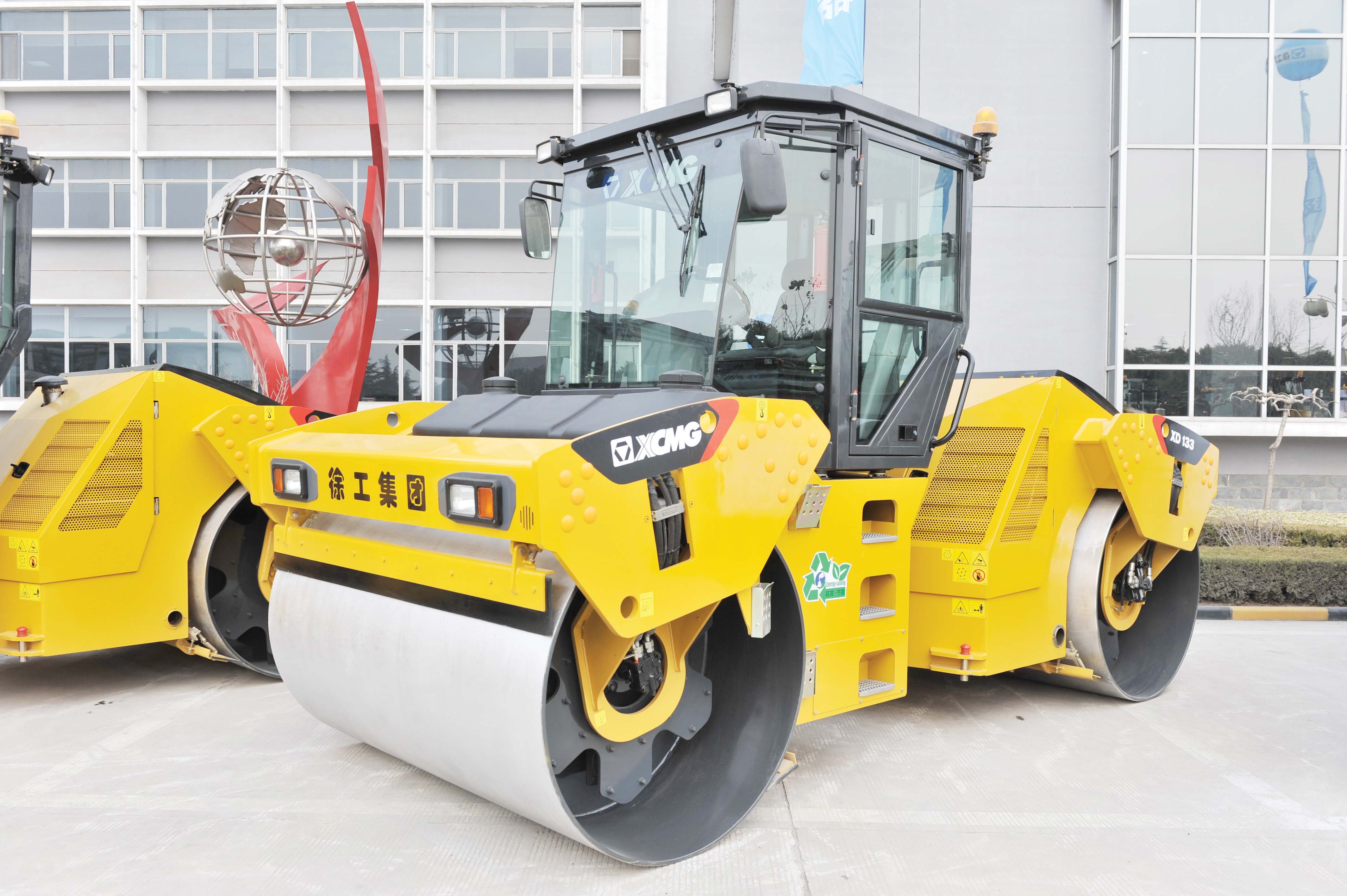
RSSManufacturers are introducing new compaction machines to meet the latest market requirements - Mike Woof writes
A wide array of new asphalt compaction machines is now coming to market, with advanced equipment being introduced by leading players in the sector. New developments in engine technology have pushed through a lot of changes for asphalt compaction machines, however there have also been notable developments in the systems the equipment use. Intelligent compaction technologies are becoming more widespread and more sophisticated, with machine control systems also playing an increasingly important role. For larger highway projects, the use of machine control systems is now widely accepted by major contractors and their clients. These systems offer substantial gains in productivity and efficiency, reducing working time and costs while delivering optimum quality and ensuring that specifications are met.
Development of the machines has been progressive and a wide array of new and improved models is coming to market, both from established players and firms looking to develop their presence in western markets.
This innovative exciter system now offers increased compaction productivity. According to the firm, co-ordination of the exciter system to drum weight ratios is the key to Bomag’s tangential oscillation system and this technology can be used on bridge structures, in close proximity to buildings, and for finishing applications. With TanGO always directed horizontally, it maintains continuous ground contact and efficient compaction is often evident after a few passes. The interaction of TanGO oscillation from the rear drum and traditional vibration from the front drum provides advantages on difficult to compact asphalt mixes.
For North America,
The two new compactors add to the range of high frequency double-drum models, and are said to give road builders more control and versatility to match the thickness and required density of each layer. The DV209 and DV210 have operating weights of 9.54tonnes and 10.3tonnes respectively, and use a standard drum width of just over 1.67m on both machines. They have both been designed to suit most mid-size and large road projects.
Both the DV209 and DV210 are compatible with optional ACEforce asphalt compaction technology. ACEforce is a compaction management and documentation system that provides precise measurement and evaluation of material stiffness, and allows for continuous adjustment of speed, frequency and amplitude depending on compaction measurement.
This is said to improve compaction efficiency by assisting in completing the job in as few passes as possible, and helps minimise the risk of over compaction and material destruction. Additionally, both machines feature large water and fuel tanks to allow the machine to work all day without fill-up, maximising productivity. Both models are also compatible with the Case SiteWatch telematics system, which helps equipment owners better manage maintenance, equipment utilisation, operator performance, equipment security and overall production.
Aimed at the utility segment,
The vibratory system offers a range of frequencies and single amplitude that provide lower sound levels and job site versatility. Increased drum diameters provide efficient compaction, while the smooth rear tyres on the CC24B and CC34B variants provide a kneading action for a tight mat finish. A 50mm drum offset allows good control when working close to a kerb, while the machines have various ballast options. Meanwhile the water spray system has a large capacity for up to 12 hours of use without refilling.
Moving up the size scale, the CG2300 twin drum asphalt roller from Atlas Copco Construction Equipment’s
The ergonomically-designed cab is said to offer good visibility of the drum edge as it has a sliding Seat and steering assembly. The visibility allows an operator to see a 1m high object placed just 1m from the machine, boosting safety. Meanwhile the good all round visibility allows the operator to see the drum surfaces and the flow of water from the sprinklers. The control panel provides key machine information, while further operating data can be accessed with the firm’s optional (and highly sophisticated) DCA-A software. This package displays the temperature ahead of the roller as well as to the rear of the machine, while also showing how many passes have been made on the respective road sections.
Power comes from a Tier 4 Final/Stage IV compliant diesel and the firm has addressed the issue of fuel consumption too by fitting an ECO Mode system, cutting fuel use by around 15% as well as lowering operating noise. The hydraulically driven, temperature-guided cooling fan further cuts the machine noise as this cooling system only switches on when it is needed.
Operating performance is further optimised by twin pumps for the vibration circuitry, with one pump for the front drum and the second at the rear. This layout increases overall efficiency, eliminating the need for special valves and making servicing simpler, while also lowering fuel consumption. Meanwhile options include an edge presser/cutter (left and right) and a chip spreader.
Part of the
The 6.4tonne Hamm HD+ 70i VT combines a smooth drum with pneumatic tyres. The HD+ 80i weighs in at 7.3tonnes, while the HD+ 90i weighing 9.1tonnes and both models come with various options. Customers can choose from conventional vibration, high frequency compaction, the novel oscillation compaction, split drums, and have the choice of either smooth drums or a smooth drum combined with pneumatic tyres. The 10.4tonne HD+ 110i VO also features both conventional vibration and Hamm’s oscillation system. Meanwhile the 12tonne HD+ 120i VV HF is a high-frequency roller aimed at specialised use and the 14tonne HD+ 140i VV is a more conventional vibration type compactor.
All the rollers share the firm’s proven Hammtronic machine management system, aimed to optimise performance while minimising fuel consumption, by operating the engine in the optimum load range at all times. The machines feature fully adjustable seats with integral control levers that move with the console from side to side and swivel through 180°.
From
The versatility is augmented by the choice of low or high compaction forces, with the former suiting asphalt compaction and the latter for compacting granular materials. The control layout features a multi-function lever for selecting the vibration options and the water supply, while the machine has improved all-round visibility. Safety is offered by an integrated roll-over structure that can be folded back or forward for use in low height areas or for transport. The operator benefits from a vibration damped working area along with an ergonomic Seat and Controls. The machine is designed with no lateral overhang so that it can work up close to walls or highway barriers and is said to be robust and durable in construction. Two versions are offered, a standard model featuring the forward and backward folding roll-over protective structure and ergonomic driver's Seat and a variant with a central lifting point, a left-sided armrest, drum-edge lighting, and a fold-down scraper bar, as well as an optional automatic vibration connection and water cut-off.
With

